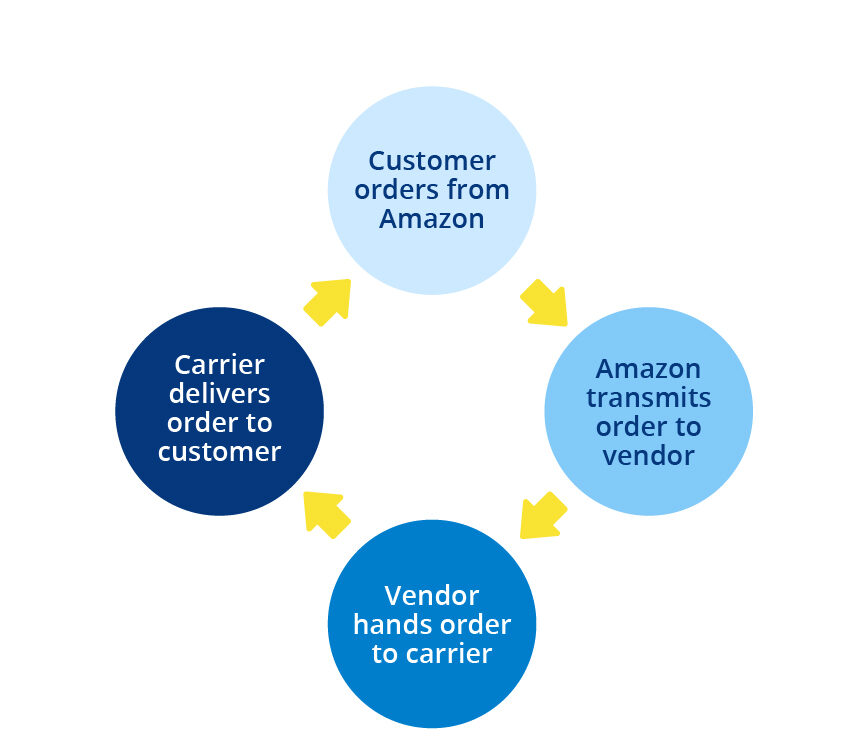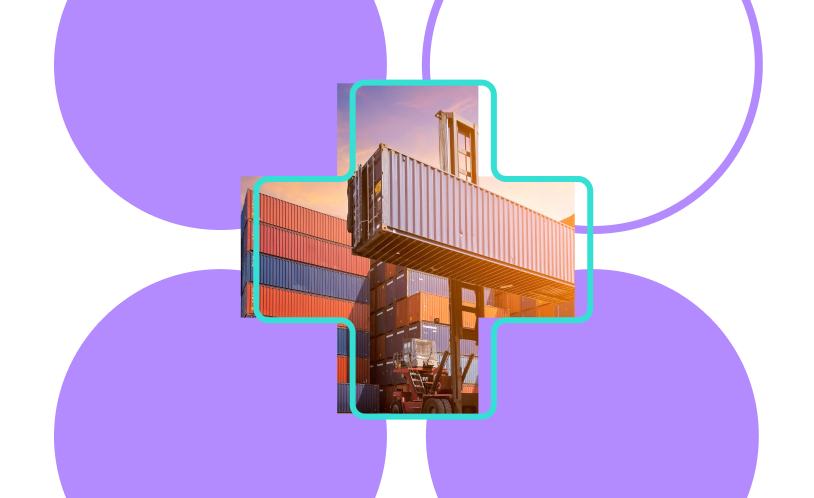Dave Bryant is a bona fide eCommerce expert who has been importing from China for over a decade. He sold his private label company in 2016 after growing it to seven-figure revenues. He now produces the EcomCrew podcast and blog where he teaches others how to import from China and sell on Amazon.
Have you ever contemplated shipping full containers directly from China to Amazon’s FBA warehouses?
Many of us may have air shipped a small number of products into Amazon FBA before but the idea of shipping an entire container of goods can be terrifying…
Will Amazon actually accept a FULL container of products? What happens if there are problems with your shipment – will it be turned away and sent on the next boat back to China? And how do you deal with the issue of Amazon splitting shipments to multiple fulfillment centers?
In this article, I’ll discuss how you can ship full containers into Amazon and alleviate many of the concerns you may have.
Why Ship Directly to Amazon?
There are three primary reasons to ship your containers directly to Amazon:
- Reduce costs from third parties such as third-party logistics companies (3PL)
- Reduce transit time
- Reduce touch points, thereby reducing the chances of lost and damaged products
The costs to have a third-party logistics company (3PL) receive, unload and re-distribute your products to Amazon warehouses can be significant. Most 3PLs charge an unloading (de-stuffing) charge of at least $200 along with any combination of pickup fees, label fees, pallet fees, and so on.
Even if you have in-house fulfillment through your own warehouse, there is still a cost to you, whether direct or indirect, for unloading and re-distributing a container. One of the best things about shipping directly into Amazon is that they do not charge any receiving fees.
When shipping directly into Amazon you also reduce transit time. If you have your container shipped to a 3PL or your own warehouse, it can add anywhere from a couple of days to a couple of weeks to your transit time.
Finally, when you ship directly into Amazon you reduce touch points for the products in your container. By having a container unloaded at a 3PL or your own warehouse and then re-distributed to Amazon warehouses, you are increasing the chances of items being lost and/or damaged.

Downsides of Shipping Directly to Amazon
Shipping directly to Amazon is not without its downsides. The most significant issues are:
- No chance to catch problems with products before they reach Amazon
- Higher storage costs
When you ship your products directly to Amazon from China you eliminate one last chance to catch any catastrophic issues with your products. Unfortunately, in my ten years or so of importing I’ve had the misfortune of discovering major issues with our products when they hit the shores of North America (instead of discovering them at our factories in China where the problems are much easier to fix).
If you’re shipping directly into Amazon, it’s critical you eliminate the chance of any catastrophic problems with your products. Best practices include having a third-party inspection done in China, as well as only shipping products you have imported previously.
Amazon’s storage costs are also significantly higher than most 3PLs or other storage facilities. During the holidays (from October to December), for example, it’s not uncommon for storage costs at Amazon to be well over 500% higher than other storage options. The rate can be even higher if you discover yourself in a situation where you are being charged long-term storage fees (for items that have been at Amazon for longer than six months).
Ideally, you should only send containers when you are relatively confident that they will sell through in six months or less, and ideally three months or less.
Looking for live quotes from vetted providers?
The Multiple Fulfillment Center Conundrum
At this point you may be thinking to yourself that this all sounds great, but what do you do when Amazon asks for your shipments to go to multiple fulfillment centers?
The good news is that often Amazon will only request that you send your goods to one fulfillment center, especially if you do not mix oversize and standard size items.
But what do you do if your shipments are divided to multiple Amazon Fulfillment Centers?
The easiest and most expensive option is to turn on Inventory Placement within Amazon. Inventory Placement adds significant costs to your shipments within Amazon, however, and it can quickly eliminate any cost savings you get from shipping directly to Amazon.
The next and, perhaps, best option is to create multiple shipments well in advance. Currently, Amazon does not have a time deadline for when you create shipments.
Imagine that you can fit 500 widgets in a 20’ container. When you create your shipment within Seller Central, Amazon asks you to ship 250 units each to two fulfillment centers, LA6 (Las Vegas, Nevada) and IND2 (Plainfield, Indiana). Instead of creating a shipment for 500 units, create a shipment for 1000 units. Now Amazon will ask you to ship 500 units (one full 20’ container) to each location. At that point you can simply ship your first container to LA6 and the next shipment (perhaps many months down the road) to IND2.
This is a useful trick, but Amazon could close the loophole in the future.
How to Create Shipments within Seller Central
The process of creating a shipment within Seller Central to be fulfilled by Amazon is actually very simple. You simply create a shipment as you normally would. As you are completing your shipment, there’s a couple of information fields you should be aware of:
Ship from Location: Set this as your Chinese supplier’s address.
Shipping Service: Select “Less than truckload (LTL)” and “Other carrier: other”. You use this option for LCL or FCL (despite it only saying LCL).
As usual, you will need to have Amazon carton labels on all of your cartons. Provide these to your supplier in China and ask them to apply them to the cartons.
Amazon, at this time, will accept floor-stacked containers or palletized containers. If you ship on pallets, you will need to make sure the pallets also have pallet labels applied and ensure that they meet fumigation import standards.
Arranging Shipment with Your Freight Forwarder
Arranging the shipment from China directly to an Amazon warehouse is straightforward. Simply tell your freight forwarder the address of the Amazon warehouse and quote delivery charges there based on your shipment terms with your supplier (ie, FOB Shanghai, EXW Shenzhen, etc).
The only two caveats are that you will need to complete an FBA Booking Form in advance and provide it to your freight forwarder (download it here) and your forwarder should be aware of Amazon delivery requirements.
Thankfully Freightos makes this entire process very easy through their online marketplace and Amazon FCL flow. Using its intuitive interface, you can quickly and easily create and send full-container shipments from China directly to Amazon.
Freightos also has features designed to help Amazon sellers, including providers that specialize in FBA deliveries, total visibility and control across every shipment, and round-the-clock support.
Conclusion
The idea of sending container loads of products directly to Amazon may seem intimidating at first, but it is actually a straightforward and hassle-free process that can save you time and money.


